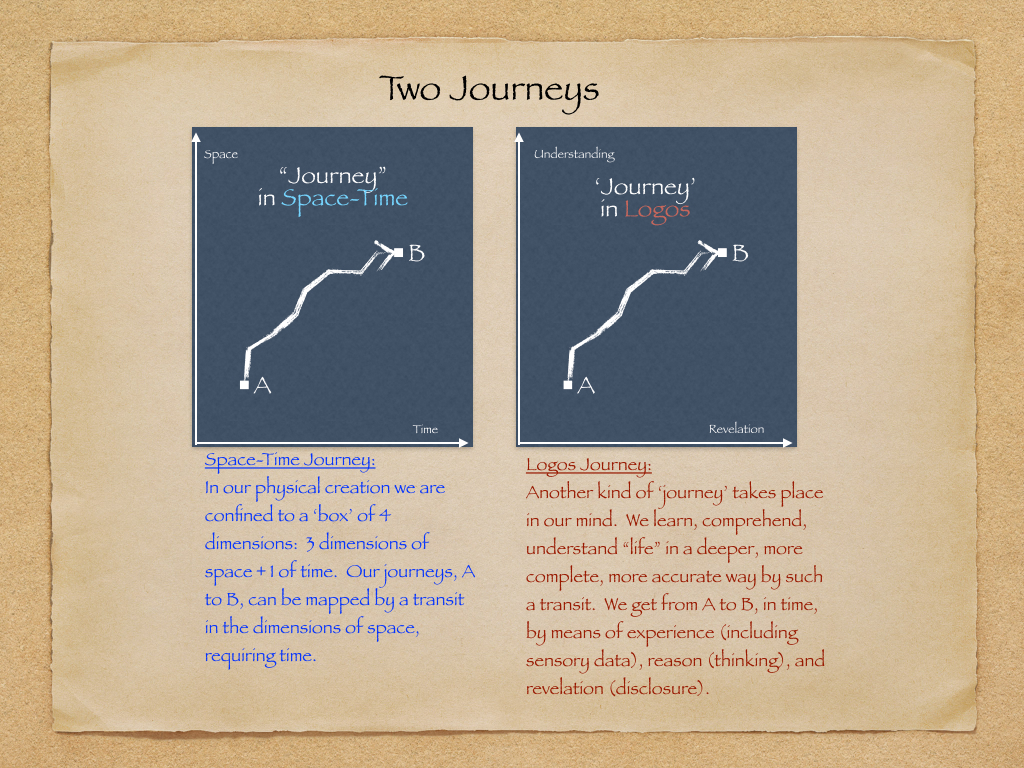We will study these Three Books using the ‘lens’ of a Journey. As we use the word (“journey”) we think of some starting point, call it “A,” with the goal of some end point, “B,” requiring time and effort. This is our life in the world of our physical creation, bounded by three-dimensional space plus time.
There is another kind of a ‘journey’ we all undertake, namely that of gaining an understanding (grasp). This is a journey of the mind (when it comes to learning) or, as we like to express it, of the heart (with regard to passions, values). The most well-know expression of a journey to, and by, the Christian faith is a book entitled Pilgrim’s Progress by John Bunyan, written in the 17th Century. Additional information on this book is available here.
In Three Books we will see both the physical (space-time) and inner /spiritual journeys. The physical one, in space-time, will be a metaphor, and sign, of the hidden, and far more meaningful journey, namely that of our “spirit,’ our innermost being capable of connecting to the God of the universe. Such “spirit” uses the apparatus of our mind, and the tablet of our heart, but is something greater and deeper: it transcends the boundaries of space-time.
Consider the below illustration:
There is a very important ancient Greek word that appears in the text of our Three Books and throughout our English language: Logos (pronounced LOW-goes, or LAG-ohs). It can mean simply “word.” But usually it conveys a much richer meaning, such as revelation, body of learning, understanding. It appears in English as the suffix appended to almost every field of study in the form of “-ology,” such as biology, psychology, geology, archaeology, etc.. These compound words mean, literally, the study (or discipline, or knowledge-content) of living entities (bio-), of the soul of men (psych-), of rocks (geo-), of ancient artifacts (archae-).
In the opening 18 verses of the Gospel of John we have the presentation of the greatest journeys undertaken in this universe, setting the stage for our Three Books study:
The journey of God from boundless eternity into a single point in space-time, as Jesus the fully human incarnation of the fully God-Creator, and
The journey from the God-side revealing Himself (The Logos) to those people sharing His space-time, while fulfilling all the Old Testament expectations (and hopes) of the Messiah Who He was, while making possible that His revelation would be passed widely in space and down in time to reach even us here and today. On the man-side, we too have a journey, we all have, in receiving the light of revelation of God with us in space-time, and His work on our behalf. The Logos, Jesus the Christ, the unique God-man, is that Logos of revelation enabling and causing our comprehension, as best we have it, of God and His work.

